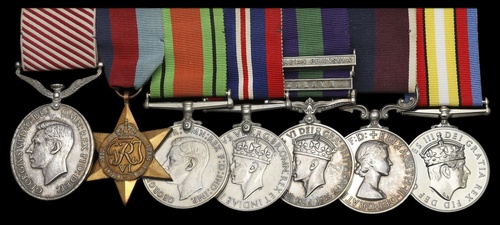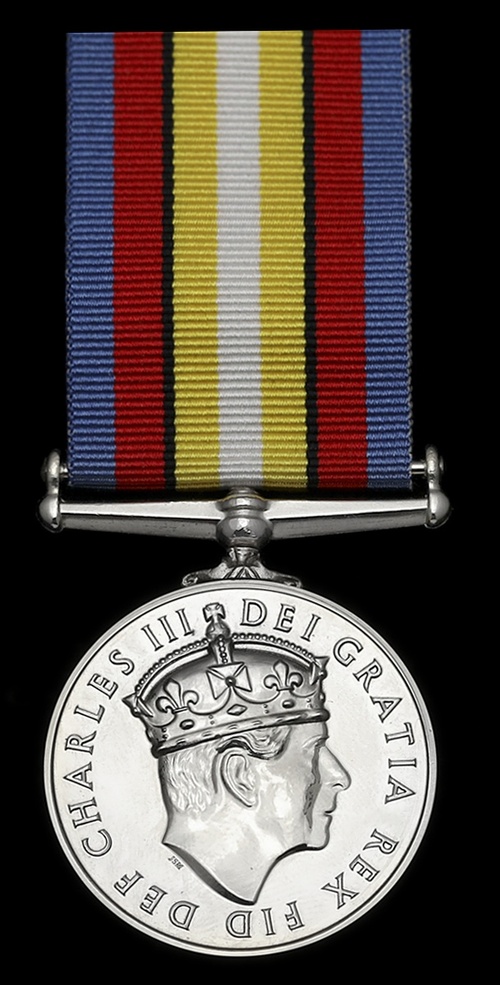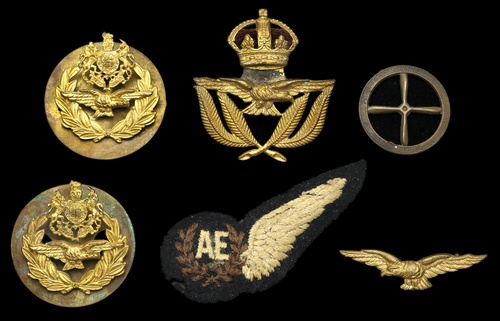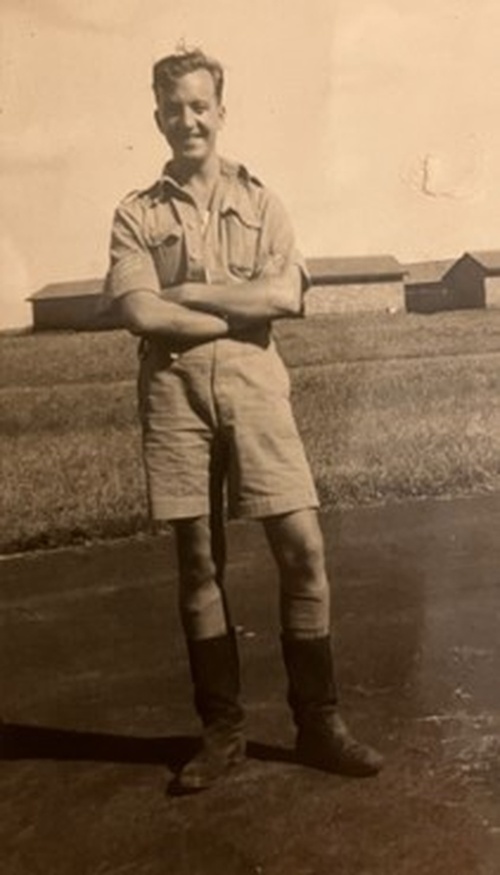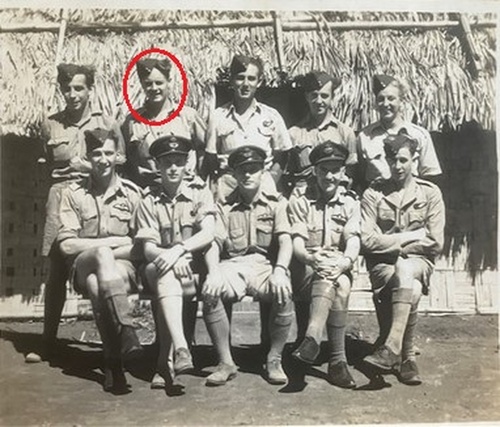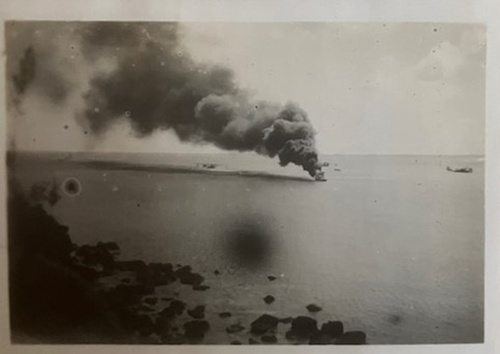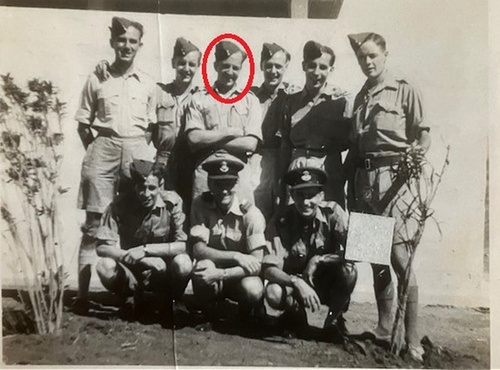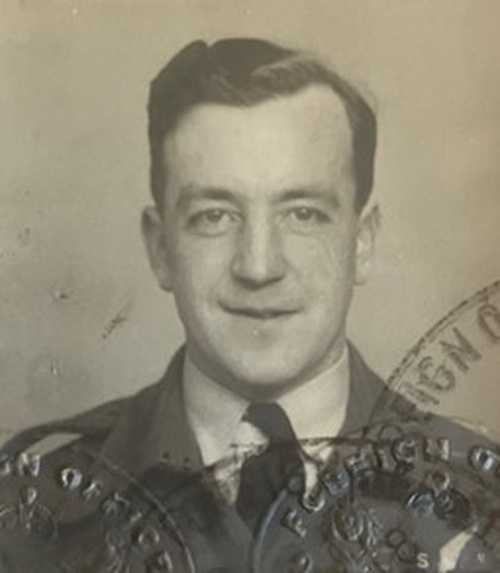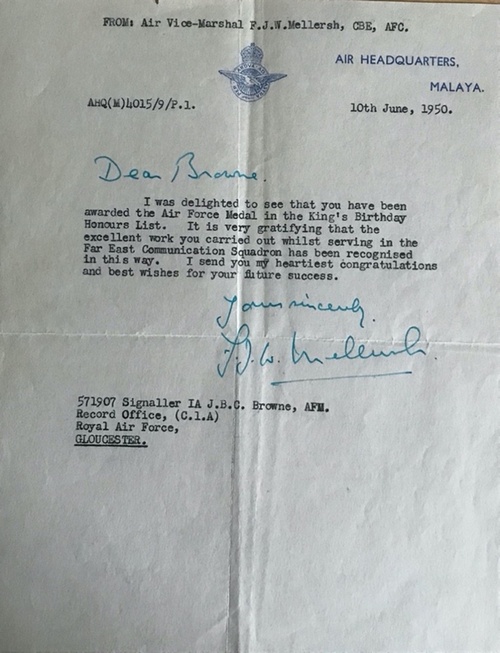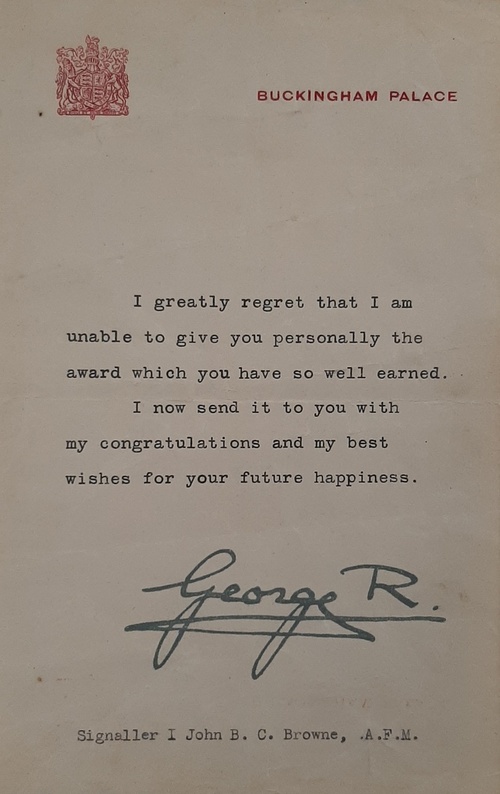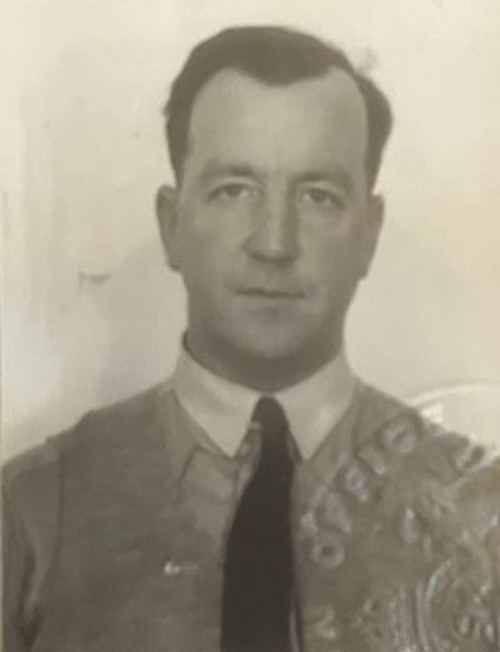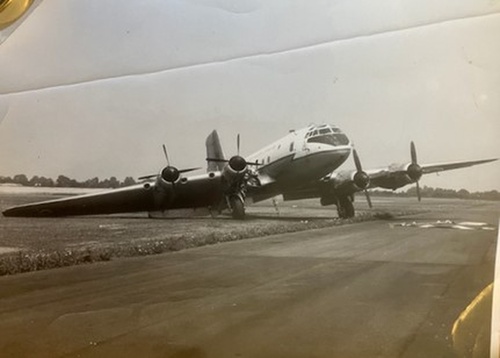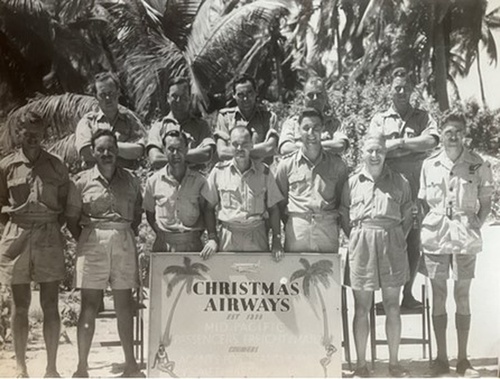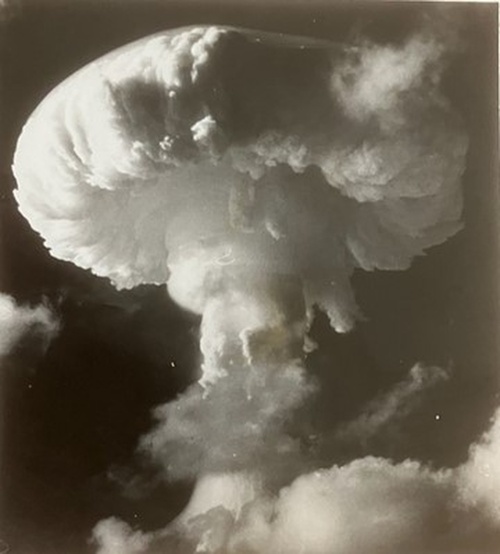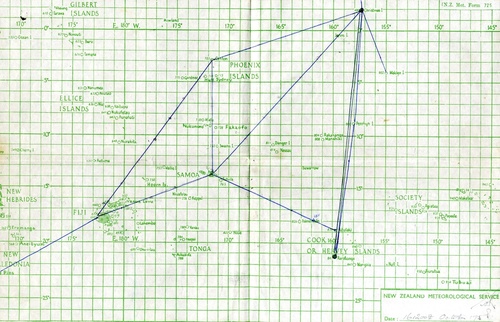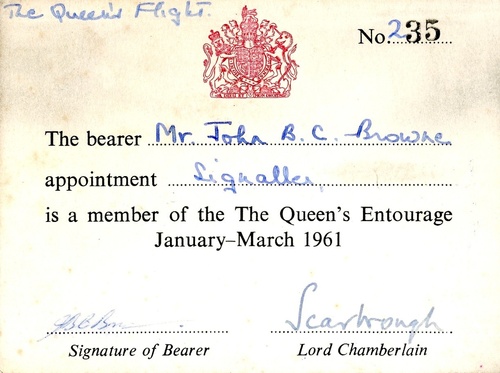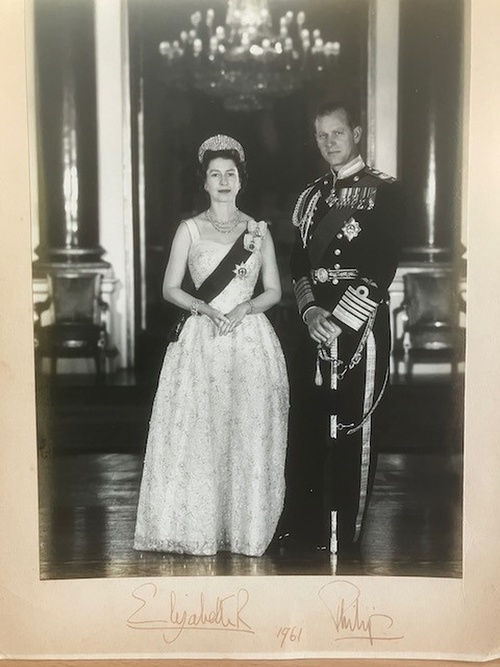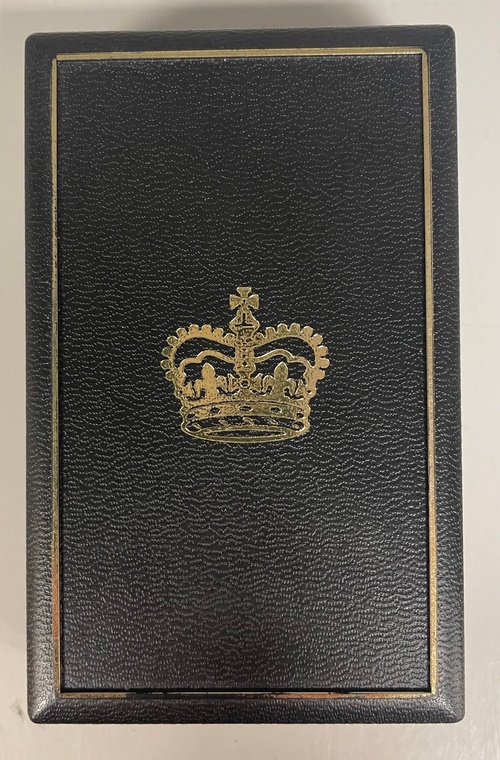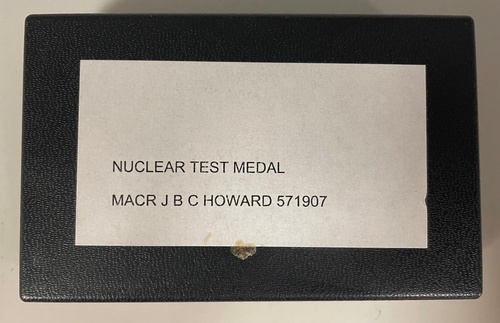Auction: 25001 - Orders, Decorations and Medals
Lot: 398
Sold by Order of a Direct Descendant
The unique and superbly well-documented 'Far East Communication Squadron 1950' A.F.M. group of seven awarded to Master Signaller J. B. C. Browne, Royal Air Force, who was awarded his Nuclear Test Medal for the 'Christmas Airways' flights to Christmas Island during Operation Grapple
Browne's remarkable career saw him flying during the Second World War, earning his A.F.M. in the east for flights which included missions to China redacted from his service papers and flying the Royal Couple during their 1961 Royal Tour of Nepal
Air Force Medal, G.VI.R. (571907 Sig. I. J. B. C. Browne. R.A.F.); 1939-45 Star; Defence and War Medals 1939-45; General Service 1918-62, 2 clasps, Malaya, Arabian Peninsula (571907 Sig. I.A. J. B. C. Browne. R.A.F.), the second detached in its named box of issue; Royal Air Force L.S. & G.C., E.II.R. (M. Sig. J. B.C. Browne. (571907) R.A.F.); Nuclear Test Medal, unnamed as issued, the first six mounted as worn, the last in its named box of issue, sold together with a large archive including the recipient's flying log books, minor contact wear to sixth, overall good very fine (7)
A.F.M. London Gazette 8 June 1950, the original recommendation states:
'Signaller I Browne joined the Squadron in October, 1948, having been in Japan from October, 1947, and has been employed as a V.I.P. Signaller. He is a first class non-commissioned officer with exceptional technical ability, having consistently held an 'A' category since August, 1946. During the last six months he has completed 300 flying hours on some of the most important flights assigned to this Squadron, and he has also extended his 'A' category to cover York aircraft as well as the Dakota, the type in which he is primarily signaller and, on numerous long distance flights during his tour of duty in the Far East Communication Squadron, he has carried out his duties in an exemplary manner. He has shown ability, coolness and enthusiasm and is an outstanding non-commissioned officer.'
Note the Recipient's Flying Log Book for the period of 1947-1952 is missing, it is believed to have been recalled owning to a redacted mission in China rather than misplaced or lost.
John Blake Cameron Browne (who later changed his surname to Howard) was born in Kensington, London on 19 February 1922, the son of Andrew and Wilhelmina 'Billy' Browne. His father was a former professional soldier who served as a Sergeant-Major with the Essex Regiment and was seriously wounded in the leg at Gallipoli. He appears to have suffered from post-traumatic stress disorder and left the family in 1929 leaving his wife to raise the children herself. The young Browne received only a basic education however this was enough for him to pass the entrance tests for an apprenticeship at R.A.F. Halton on 24 August 1937.
He was initially posted to the Electrical and Wireless School before transferring to No. 2 Wireless School on 26 March 1938. He must have proven himself a quick learner as he was soon selected to leave Halton for Cranwell, where he specialised as a Signaller. He was still there on the outbreak of the Second World War on 3 September 1940, they spent the day dispersing the aircraft around the perimeter of the airfield in case of air raids.
The Second World War
Qualifying as Wireless Electrical Mechanic on 29 January 1940, Browne reached his majority the next month on 19 February and was appointed Aircraftman Class I the same day. Posted first to No. 29 Squadron and advanced Leading Aircraftman on 1 April 1940 he served with them at R.A.F. Digby. Here he was on the receiving end of several bombing raids, being promoted Corporal on 31 December 1940. The Squadron re-equipped with Bristol Beaufighters to replace their old Blenheims not long later.
Transferring to R.A.F. Pembury he undertook an air gunner's course, becoming qualified on 6 January 1943 and advanced Sergeant on 7 January. Joining No. 10 Radio School Carew Cheriton, he served there until 17 February 1943 when he was posted to Coastal Command's 131 Operational Training Unit which was located on Loch Erne in Northern Ireland. There he had his first flight on a Catalina flying boat on 18 February.
Having qualified, Browne was posted to the newly formed 265 Squadron based in Northern Madagascar. After a gruelling journey across Africa, he finally reached the posting in early June and began to undertake fleet escort and search and rescue missions as Wireless Operator/Air Gunner. Racking up increasing Operational flying time in December he had 250 hours and was advanced Flight Sergeant on 6 January 1944.
Over the next year he was to continue in this role, adding Meteorological Flights to his duties. The last of Browne's wartime flying was with 265 Squadron having undertaken 562 hours of Operational flight with them and an impressive 1076 hours in total. Posted to R.A.F. Wymeswold on 5 May 1945, he arrived on 8 May - V.E. Day - to discover the station all but deserted, the guard on the front gate informed him that everyone was celebrating in the pub.
V.I.P. Flying, a Redacted Mission and a Crash Landing
Browne retrained with Douglas Dakotas and was soon posted to 147 Squadron, flying for Transport Command. This Squadron flew from Britain to Europe allowing Browne to assemble a collection of European banknotes which he stuck into his log books.
Joining 24 Squadron for V.I.P. transport flights in October 1946 he was posted to the British Commonwealth Air Force in Japan the following year. The next year Browne again moved, this time to the Far East Communications Squadron. Two months after he joined them a period of one week on his service records is redacted, this combined with his missing log book covering this period is suggestive of a clandestine mission. The cataloguer must leave it to the reader to imagine the nature of this work however it occurred at a time that Browne was known to have been flying to China, then embroiled in the Civil War.
Returning to Britain in April 1950 he was awarded the Air Force Medal at R.A.F. North Luffenham for his work with the Far East Communication Squadron. His work there had also entitled him to the Malaya bar for his General Service Medal however this would not be issued at the time and Browne was to receive the G.S.M. for a separate campaign. Joining 242 Operational Conversion Unit as a Trainer and he was recommended a Commission at that point however he rejected the offer, feeling that he preferred his role as a Warrant Officer.
Returning to No. 24 Squadron on 6 December 1953 he rang in the new year with a promotion to Master Signaller on 31 December. One of his early flights here on 22 May 1954 was transporting Anthony Eden (then Foreign Secretary) and Lord Ismay (then Secretary General of Nato) from Geneva to Paris and thence to Britain. A further flight in July almost led to disaster as the crew lost their way between Suffield, Alberta and Britain. An S.O.S. signal was sent out and after a tense period of waiting were picked up by a passing liner which was able to give them their co-ordinates, with their available fuel they were just able to make an emergency stop at the Azores Islands.
That same year he performed trips to Australia which included the transport of material and personnel involved in the developing Nuclear programme. During one routine training mission the next year out of R.A.F. Abingdon the Hastings aircraft Browne was flying in crashed on landing. Fortunately the crew were all unharmed although the aircraft itself lost a wing. The next year he transferred to No. 47 Squadron flying mostly to the Middle East, Cyprus and Malta.
Christmas Island Airways and Operation Grapple
Browne had already been involved in Britain's Nuclear Testing programme due to the flights between Canada - a source of Uranium - and Australia, from whence the early 'A Bomb' tests were launched at Maralinga. Now Britain was preparing for a new Nuclear test with the far more powerful 'H Bomb', requiring them to look further afield for testing sites.
Arriving on Christmas Island on 21 September 1958 Browne was to serve as crew for the three Dakotas: Polynesian Princess, Coral Queen and Island Romance, which would fly over the testing site to record the results of the detonations. In fact he would fly in all three aircraft with his first run occurring on 25 September with No. 1325 (Transport) Flight 'Christmas Airways', which had been in operation since 1956.
This was the start of an intense series of flights which saw him rack up over 150 hours in the course of just three months. Their other role was to fly re-supply missions for the weather and monitoring stations on Fanning and Malden Islands. Some of these Islands did not have a landing strip and as such the crews developed a 'Bouncing Palette' system inspired by the 'bouncing bomb'.
During his stay here Browne learned to dive, amassing a collection of pearls which he had collected himself. On one occasion he arranged for coconuts to be sent by air mail for his children in England. The new year brought further flights around Christmas Island, as well as the wider Pacific and even as far as Singapore and Australia. The Squadron was disbanded at Singapore in May 1959 however it should be noted that Browne was still flying in Dakota KN 598 Coral Queen in July.
Royal Tour
After a brief tour of R.A.F. Abingdon he was posted to the Queen's Flight for service in the Royal Tour of India, Pakistan and Nepal. The vast majority of flying on this tour was performed by a B.A.O.C. Bristol Brittania, however the airfield of Kathmandu was not yet constructed and there were only small, flattened grass airstrips available. For this Browne would crew a modified Dakota which could land on such terrain quite easily.
They flew from Delhi to Kathmandu on 14 February 1961 with the Captain of the Aircraft one Squadron Leader Langley. Staying at the Snow View Hotel, Browne's first Royal Flight was on 27 February between Kathmandu and Maghauli, a journey of four hours. A second one followed the next month on 1 March between Kathmandu and Gorakhpor, a much easier flight of a little over an hour.
The tour returned to Delhi the same day with Squadron Leader Langley allowing several extra passengers to join them on the flight. This almost caused disaster as the extra weight made take off considerably more difficult which was hardly ideal with a thousand-foot drop at the end of the runway.
Epilogue
Returning to R.A.F. Abingdon he joined the Transport Support Element there, this involved a certain amount of Operation flying and a great deal of parachute training. Browne was finally posted to 242 Operational Conversion Unit at Thorney Island on 1 February 1964 as Air Electronics Officer. Here he performed a largely ground based role which frustrated his love of flying and travel.
Just prior to leaving the R.A.F., Browne changed his name to Howard as a result of changing family circumstances. He left the service the next year, taking his last flight in January and being discharged on 1 June 1968, and settled in Devon, initially running a post office. This venture sadly did not succeed and he settled into life as an electrician instead at Kingsbridge, Devon.
Reaching the age of 100 he received a letter and photograph from the Queen to go with the signed portrait he was presented with on the Royal Tour. Browne died on 18 December 2022, having lived a remarkable life; sold together with copied service papers and A.F.M. recommendation as well as a remarkable archive of original material comprising:
i)
Six flying logbooks dated between 1943-1968, the logbook covering 1947-1952 is missing, believed to have been returned.
ii)
Two passports.
iii)
Two Aircrew Categorization cards.
iv)
R.A.F. Certificate of Service.
v)
Air Engineers 'Wings' along with five Cap badges including one R.A.F. Halton badge.
vi)
Six photographs, two featuring the recipient.
vii)
Two letters congratulating the recipient on his award of the A.F.M. from Air Marshal F. J. Fogarty and Air Vice-Marshal F. J. W. Mellersh.
viii)
The A.F.M. slip of issue, including its original envelope and a newspaper cutting announcing the award.
ix)
Three cut-out logos from the Snow View Kathmandu and Ashoka Hotel New Delhi where the recipient stayed on the 1961 Nepal Royal Tour and a tourist map of Kathmandu.
x)
The 'Queen's Flight identity card named to 'Mr John B. C. Browne.'
xi)
A hand drawn chart depicting a flight from Christmas Island during Operation Grapple, flown in October 1958.
xii)
The recipient's Birth Certificate.
xiii)
Three newspaper cuttings relating to the recipient's career.
xiv)
The Ministry of Defence slip of issue for the Nuclear Test Medal.
xv)
A typed 72 page memoir written by the recipient's son, to be emailed to the winning bidder.
Subject to 20% VAT on Buyer’s Premium. For more information please view Terms and Conditions for Buyers.
Estimate
£2,500 to £3,000
Starting price
£2000

